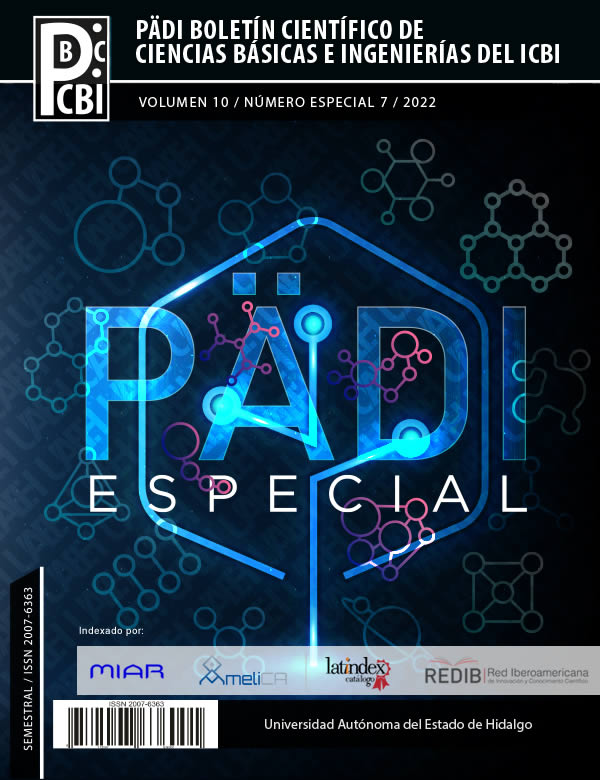In vitro evaluation of hemocompatibility in hydrothermally synthesized HA
Abstract
Hydroxyapatite (HA) is a biomaterial to restore bone tissue due to its biocompatibility. Among the biological tests to be performed to evaluate it is the hemocompatibility test. In this study, HA particles were synthesized by the hydrothermal method to determine its hemocompatibility. The size was controlled by the use of surfactants, a 22 factorial experimental design was performed, using the following surfactants: EDTA (1 and 2mM) and Pluronic F-127 (3 and 6 mM). The presence of the hexagonal phase was validated by X-ray diffraction and Fourier transform infrared spectroscopy. The use of surfactant promotes the change in morphology of hydroxyapatite, rods were obtained for the use of EDTA and needles and plates were obtained for the use of Pluronic F-127. Hemocompatibility was determined by hemolysis test. Most of the HA particles synthesized using Pluronic F-127 and EDTA show less than 5% hemolysis suggesting that they are highly compatible according to ISO 10993-4, and could be used in biomedical applications.
Downloads
References
Amor de Jesús, A. G. (2018). Obtención de nanoestructuras de hidroxiapatita-Au y su potencial aplicación en liberación de fármacos (Doctoral dissertation, Universidad Autónoma de Nuevo León).
Cardona, J. C. O., Zuluaga, I. M., Sossa, P. A. F., Arango, P. J. A., & Parra, E. R. (2014). Síntesis y caracterización de la hidroxiapatita natural obtenida del hueso de cerdo. Revista Colombiana de Materiales, (5), 165-171.
Curtin, C.M.; Cunniffe, G.M.; Lyons, F.G.; Bessho, K.; Dickson, G.R.; Duffy, G.P.; O'Brien, F.J. Innovative Collagen Nano-Hydroxyapatite Scaffolds Offer a Highly Efficient Non-Viral Gene Delivery Platform for Stem Cell-Mediated Bone Formation. Adv. Mater. 2012, 24, 749–754. https://doi.org/10.1002/adma.201103828
Castañeda Vía, J. A., Quispe Marcatoma, J., Landauro Sáenz, C. V., Vera Gonzales, C. A., & Tay Chu Jon, L. Y. (2021). Simulación Teórica y Evaluación Experimental de Hidroxiapatita Sintetizada por Método Sol-Gel y Mecano-Síntesis.
de AA Soler-Illia, G. J., Crepaldi, E. L., Grosso, D., & Sanchez, C. (2003). Block copolymer-templated mesoporous oxides. Current Opinion in Colloid & Interface Science, 8(1), 109-126.
Ding, T., Xue, Y., Lu, H., Huang, Z., & Sun, J. (2012). Effect of particle size of hydroxyapatite nanoparticles on its biocompatibility. IEEE Transactions on Nanobioscience, 11(4), 336-340.
García Domínguez, G., Diaz De La Torre, S., Chávez Güitrón, L., Vergara Hernández, E., Reyes Miranda, J., Quezada Cruz, M., & Garrido Hernández, A. (2021). Effect of the structural and morphological properties of surfactant-assisted hydroxyapatite on dermal irritation and antibacterial activity. Materials, 14(21), 6522.
https://doi.org/10.3390/ma14216522
Juárez Robles, D. E., Salas Avalos, N. S., Chávez García, M. D. L., & García Mejía, T. A. (2017). Síntesis de nano-hidroxiapatita por los métodos sol-gel y coprecipitación. Revista Tendencias en Docencia e Investigación en Química 2017, 3 (3).
Laranjeira, M. S., Moço, A., Ferreira, J., Coimbra, S., Costa, E., Santos-Silva, A., & Monteiro, F. J. (2016). Different hydroxyapatite magnetic nanoparticles for medical imaging: Its effects on hemostatic, hemolytic activity and cellular cytotoxicity. Colloids and Surfaces B: Biointerfaces, 146, 363-374.
Kargozar, S., Mollazadeh, S., Kermani, F., Webster, T. J., Nazarnezhad, S., Hamzehlou, S., & Baino, F. (2022). Hydroxyapatite Nanoparticles for Improved Cancer Theranostics. Journal of Functional Biomaterials, 13(3), 100.
Gómez, M. I. O., Gómez, M. E. L., & López, H. C. (2021). Síntesis y caracterización de polvos de hidroxiapatita carbonatada tipo b con diferentes contenidos de carbonato. Revista Colombiana de Materiales, (17), 22-32.
Ooi, C. H., Ling, Y. P., Abdullah, W. Z., Mustafa, A. Z., Pung, S. Y., & Yeoh, F. Y. (2019). Physicochemical evaluation and in vitro hemocompatibility study on nanoporous hydroxyapatite. Journal of Materials Science: Materials in Medicine, 30(4), 1-10.
Qi, M. L., Xiao, G. Y., & Lu, Y. P. (2016). Rapid hydrothermal synthesis of submillimeter ultralong flexible hydroxyapatite fiber using different pH regulators. Acta Metallurgica Sinica (English Letters), 29(7), 609-613.
Radha, G., Balakumar, S., Venkatesan, B., & Vellaichamy, E. (2015). Evaluation of hemocompatibility and in vitro immersion on microwave-assisted hydroxyapatite–alumina nanocomposites. Materials science and engineering: C, 50, 143-150.
Rivera, J. A., Fetter, G., & Bosch, P. (2010). Efecto del pH en la síntesis de hidroxiapatita en presencia de microondas. Matéria (Rio de Janeiro), 15, 506-515.
Olson, B. J., & Markwell, J. (2007). Assays for determination of protein concentration. Current Protocols in Pharmacology, 38(1), A-3A.
Wang, Y., Zhang, S., Wei, K., Zhao, N., Chen, J., & Wang, X. (2006). Hydrothermal synthesis of hydroxyapatite nanopowders using cationic surfactant as a template. Materials Letters, 60(12), 1484-1487.
Yang, P., Quan, Z., Li, C., Kang, X., Lian, H., & Lin, J. (2008). Bioactive, luminescent and mesoporous europium-doped hydroxyapatite as a drug carrier. Biomaterials, 29(32), 4341-4347.
Zhao, Q., Wang, T., Wang, J., Zheng, L., Jiang, T., Cheng, G., & Wang, S. (2011). Template-directed hydrothermal synthesis of hydroxyapatite as a drug delivery system for the poorly water-soluble drug carvedilol. Applied Surface Science, 257(23), 10126-10133.













